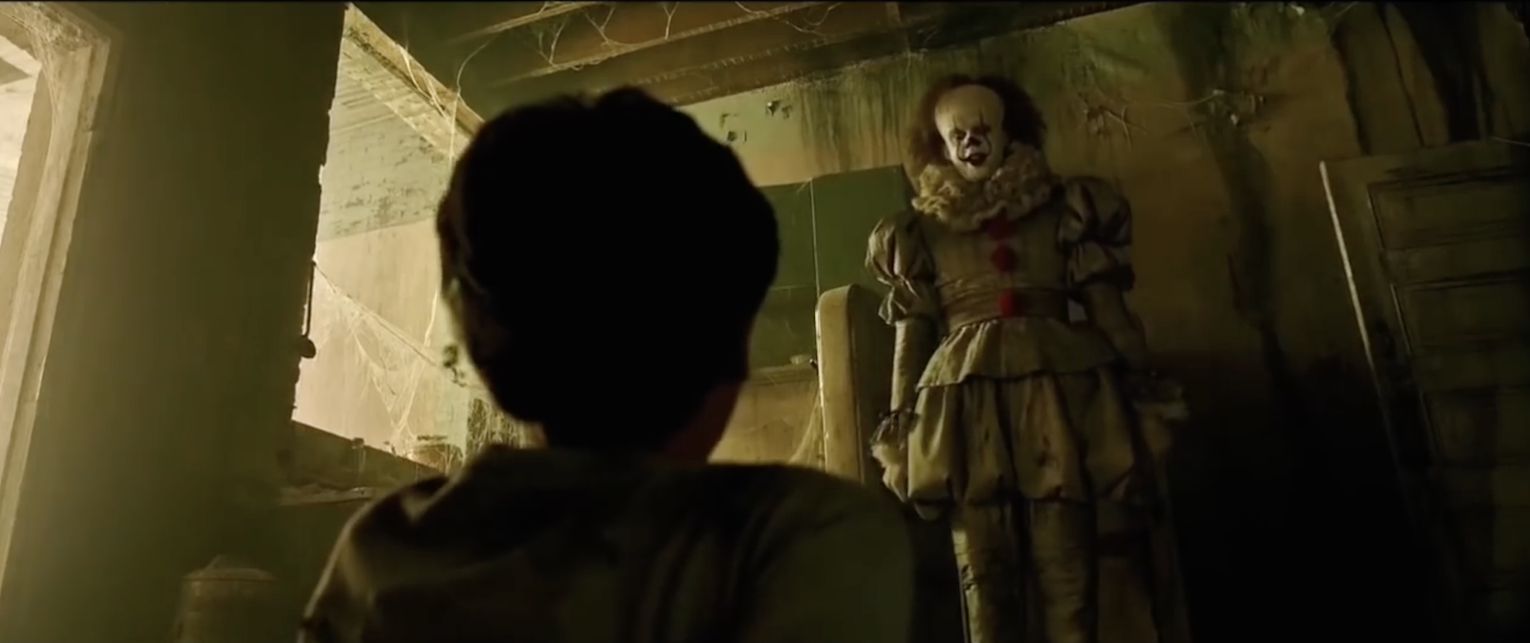Little Georgie Denbrough is an innocent 7-year-old who wants nothing more than to play outside with his older brother Bill (Jaeden Lieberher), but due to Bill being sick, is forced to wade into the torrential rains without his doting elder. Protective as Bill is, he could not maintain a watchful eye on the wandering Georgie from his bedroom window, as his younger brother encounters an insidious clown down a street drain. Discomfort sets in, as we have been brought to care about the brothers’ relationship in a few sparing opening moments, while we as an audience have an idea of who (or what) this sewer-dwelling fiend is. “It’ll be alright,” I told myself, already caring too much about Georgie’s well-being to consider the inconceivable…but then it happens, and only later did I realise that nothing could have prepared me for it.
The opening sequence is a vital mood-setter for any film going forward; almost a foreshadowing of its upcoming trials and tribulations by highlighting character and tone, while simultaneously establishing the beginnings of its narrative. I believe this is all the more important for the horror genre, as more often than not an opening that fails to instil dread is a failed opening.
In recent years, however, there have been a sparse few that managed to skillfully straddle the line between horror and heartfelt sentiment. The 2018 smash hit A Quiet Place achieved such a feat, but it is preceded by that which I have described in my own opening, Andy Muschietti’s 2017 adaptation of Stephen King’s It, which was shot in Toronto and the greater Ontario region.
Almost a year after the disappearance of Georgie, Bill still believes his younger brother to be alive, to which his friends, who proclaim themselves the Losers Club, quietly disagree. However, the adolescents are joined by new members, as each of them are brought together by a sinister presence that they believe is responsible for the numerous disappearances of their hometown, including Georgie, and thus seek answers to save not just the town, but themselves as well.
It is this cast of characters that allows It to truly transcend its contemporaries, with the writing staff of Cary Fukunaga, Chase Palmer and Gary Dauberman meaningfully developing their central group of adolescents in ways that make them all feel wholly individual. Each member of the Losers Club has their own personality traits, without being solely defined by the fear off which Pennywise (Bill Skarsgard), the demon clown tormenting them, feeds.
On this note, universal praise must be given to the main cast, with the younger actors, like their fictional counterparts, going toe-to-toe with the adults present, perfectly embodying the individuality of each member of the group. Despite this though, Mike (Chosen Jacobs), a late addition to the Losers Club, is noticeably the least dimensional of the group, with little significant dialogue or actions beyond particular moments. Thankfully, this character will seemingly get a lot more attention in the upcoming It: Chapter II.
Of course, the central figure of my praise is Skarsgard, who makes Pennywise a unique monster that could have easily fallen by the wayside of originality. Every word, every syllable uttered by Skarsgard projects a volatility that is uncannily grounded by bouts of near childishness.
This ties into the fact that Pennywise hones in on the fears of his victims, so it makes sense to grant him a certain childish characteristic, which induces an air of disquietment with every appearance. In addition to this, Pennywise is made all the more unsettling by the fact that most deaths in this film are attributed to youths, but by no means is it done in a cheap way.
I recall a review I once read by famed American critic Gene Siskel on James Cameron’s Aliens, where he criticised how it “resorts to placing a young girl in jeopardy in a pathetic attempt to pander to who knows what audience.” It does nothing of the sort, however, relying on the aforementioned dimensioning of its well-written characters to elevate threat past the realm of cheap thrills.
And oh my, does It thrill. With some of the more typical jump scares aside, Andy Muschietti proves that he is one of the most exciting horror directors working today with this single turn, using a slow-burning delivery that allows his visuals to seep in, develop and simmer, before being capped off with creatively shocking shots that evoke a sense of visceral terror. In this way, Pennywise is not just playing off the fears of children, but Muschietti too is playing off our very own. When this is added to the slick pacing, smart character development, and unanimously impressive cast, we are left with one of the most complete horror films made in recent years, and one of cinema’s best Stephen King adaptations.
![]()
![]()
![]()
![]()
![]()
![]()
![]()
![]()
![]()
![]()
8.5/10

